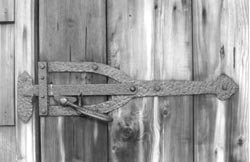 »Introduction
»Introduction
»The 1920s
»Daddy Raker
»The 1930s
»Uncle Toby
»The 1940s
»Elaine Gorham
»The 1950s
»WoHeLo Trees
»The 1960s
»Ginny Denton
»The 1970s
»Land History
»The 1980s
»Camp Directors
»Committee Chairmen
»The 1990s
»Samuel Cobb
»The 2000s
|
 The history of Camp Namanu really begins with the formation of the national
Camp Fire Girls organization. In 1910, on the East Coast several different people began to realize that girls
needed a club program similar to the Boy Scouts of America. This group included Dr. and Mrs. Luther Gulick who
were operating a summer camp for girls in Maine, and Mrs. Charles H. Farnsworth, a school headmistress from
Thetford, Vermont, who was also experimenting with a summer camp of her own. All those involved were
forward-thinking professionals involved in education and recreation for youth and they wanted girls to have an
opportunity to learn leadership skills and responsibility and to enjoy the outdoors.
The history of Camp Namanu really begins with the formation of the national
Camp Fire Girls organization. In 1910, on the East Coast several different people began to realize that girls
needed a club program similar to the Boy Scouts of America. This group included Dr. and Mrs. Luther Gulick who
were operating a summer camp for girls in Maine, and Mrs. Charles H. Farnsworth, a school headmistress from
Thetford, Vermont, who was also experimenting with a summer camp of her own. All those involved were
forward-thinking professionals involved in education and recreation for youth and they wanted girls to have an
opportunity to learn leadership skills and responsibility and to enjoy the outdoors.
In March of 1913, largely through the initiative of Miss Jessie Millard of the Library Association, Mrs. Ralph
W. Wilbur formed the first circle of Camp Fire Girls in Portland. This was quickly followed by groups led by
Mrs. George March, Miss Nottingham, Mrs. Gillespie, Mrs. Louis Girlinger and others. In 1914, Miss Mitchell of
the YWCA became the first president of the Guardians Association and that summer a camp was established at Rivera
on the west bank of the Willamette River, near the present site of Dunthorpe.

|
| Mrs. Elizabeth White (left) visiting with Edith Kempthorne |
The Portland Council was nationally chartered in 1921 with Mrs. Elizabeth White as the first paid Executive
Director. That summer the girls camped about a quarter mile upstream from Baker's Bridge on the south shore of
the Clackamas River near Carver, Oregon. The property, which was located at the mouth of Clear Creek, was loaned
to Camp Fire by Mr. C.S. Jackson and his wife Maria. Campers were also allowed the use of the Jackson's nearby
swimming hole. A dozen tents were pitched in a small meadow for three weeks and benches were borrowed from the
Portland Parks.
In 1923, Camp Namanu was moved to Eagle Creek at the present site of Eagle Fern Park near Estacada. Again army
tents were pitched in a clearing and for four weeks girls enjoyed swimming, singing and learning outdoor skills.
To the other three honors was added the Name Honor awarded to campers who could name everyone in camp. Sadly, the
Eagle Creek site was flooded by the rain-swollen creek, and so was unsuitable for a permanent camping location.
The the fall of 1923, the Portland Council hired a new Executive Director, Miss Eathel Moore. One of her first
assignments was to assist in finding a permanent home for Camp Namanu.
Full-unabridged text of this chapter is available in the 75th Anniversary Book which is for sale at the
Camp Fire USA Portland Metro Council's office in Portland.
©1998 Reprinting only with written permission of Camp Fire USA Portland Metro Council.
|